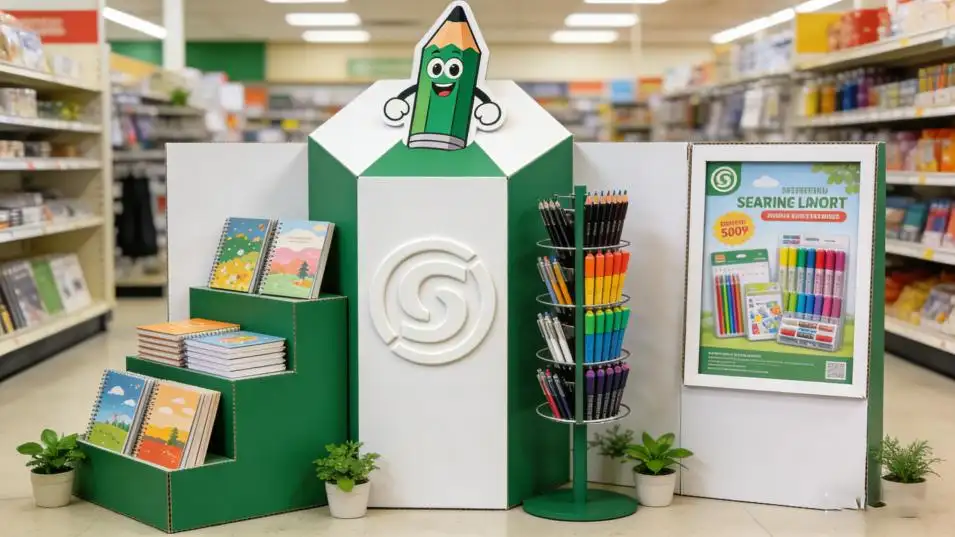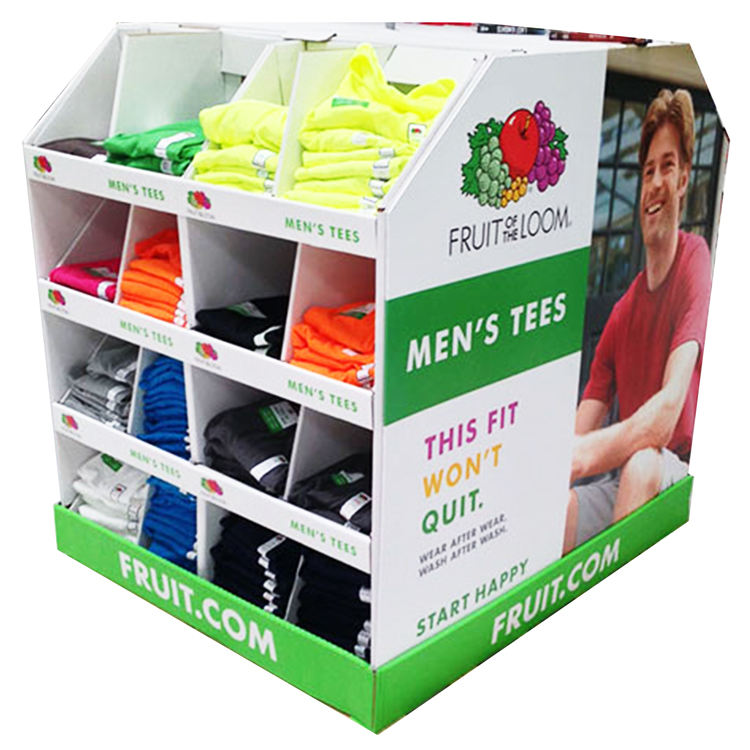Introduction
Point of Purchase (POP) displays are a powerful tool in retail marketing, designed to grab customers' attention and drive sales. Cardboard POP displays, in particular, are popular due to their cost-effectiveness, versatility, and sustainability. However, the cost of these displays can vary widely based on a multitude of factors. This comprehensive guide will delve into the various elements that influence the cost of cardboard POP displays, providing a detailed overview to help you budget effectively for your next retail campaign.
Understanding Cardboard POP Displays
Before diving into the cost factors, it's important to understand what cardboard POP displays are and why they are so effective:
- Attract Attention: POP displays are strategically placed to catch the eye of shoppers, often near checkout areas or in high-traffic zones.
- Highlight Products: These displays prominently feature specific products, encouraging impulse buys and increasing visibility.
- Enhance Branding: Customized designs and graphics on POP displays reinforce brand identity and create a cohesive retail experience.
- Promote Sales: By showcasing products in an appealing manner, POP displays can significantly boost sales and promotional efforts.
Factors Influencing the Cost of Cardboard POP Displays
Several key factors determine the cost of cardboard POP displays. Understanding these factors will help you make informed decisions and get the best value for your investment.
1. Design Complexity
The complexity of the design is one of the most significant factors affecting the cost of a cardboard POP display. Here are some design elements to consider:
- Structural Design: More intricate structures with multiple shelves, compartments, or unique shapes will cost more due to the increased material and labor involved.
- Graphic Design: High-quality, detailed graphics require more sophisticated printing techniques and higher-quality materials, which can increase costs.
- Customization: Fully customized displays tailored to specific products or branding can be more expensive than standard designs.
2. Size and Dimensions
The size and dimensions of the display directly impact the amount of material needed and the complexity of the assembly. Larger displays require more cardboard, which increases both material costs and shipping expenses.
- Small Displays: Countertop displays or small floor displays are typically less expensive due to their reduced material requirements.
- Medium Displays: These might include standalone units with moderate shelf space.
- Large Displays: Large floor displays or elaborate multi-product units will be the most costly due to their extensive use of materials and increased weight for shipping.
3. Material Quality
The type and quality of cardboard used for the display can significantly influence the cost. Factors to consider include:
- Corrugated Cardboard: This is the most common material for POP displays, offering a good balance of durability and cost-effectiveness.
- Recycled Cardboard: Eco-friendly options made from recycled materials might be slightly more expensive but appeal to environmentally conscious consumers.
- Coated Cardboard: Cardboard with special coatings (e.g., for moisture resistance or glossy finishes) can add to the cost.
4. Printing Techniques
The method used to print the graphics and branding on the display will also affect the overall cost. Common printing techniques include:
- Digital Printing: Suitable for small runs and highly detailed designs, digital printing can be more expensive per unit but is ideal for short-term promotions.
- Offset Printing: Cost-effective for large runs, offset printing provides high-quality results but has a higher initial setup cost.
- Screen Printing: Used for bold colors and large designs, screen printing is cost-effective for medium to large runs but less suitable for intricate details.
5. Order Quantity
The number of displays you order will significantly influence the unit cost. Generally, larger orders benefit from economies of scale, reducing the per-unit price.
- Small Orders: Ideal for limited-time promotions or trial runs but will have a higher unit cost.
- Large Orders: More cost-effective in the long run, especially for ongoing or large-scale campaigns.
6. Assembly and Fulfillment
The complexity of assembly and whether you require pre-assembly services will also impact the cost. Options include:
- Flat Pack: Displays shipped flat require assembly at the store, reducing shipping costs but potentially increasing labor costs for setup.
- Pre-Assembled: More expensive to ship but saves time and labor at the store level.
- Kitted Displays: Displays pre-loaded with products, offering a turnkey solution but at a higher cost.
7. Shipping and Logistics
Shipping costs are influenced by the size, weight, and destination of the displays. Considerations include:
- Distance: Longer shipping distances will increase costs.
- Shipping Method: Expedited shipping options will be more expensive than standard shipping.
- Packaging: Protective packaging to prevent damage during transit can add to the cost.
8. Additional Features
Any additional features or accessories will also affect the cost. These might include:
- Lighting: LED lights to highlight products can make the display more attractive but add to the expense.
- Interactive Elements: Digital screens, QR codes, or other interactive elements can enhance the customer experience but increase costs.
- Accessories: Additional shelves, hooks, or promotional materials included with the display will add to the overall cost.
Cost Breakdown: Estimating the Price of Your Cardboard POP Display
To provide a clearer picture, here’s a detailed cost breakdown for a hypothetical cardboard POP display project. Keep in mind that actual costs will vary based on the specific factors mentioned above.
Example Scenario
Let’s consider a mid-sized, custom-designed floor display for a new product launch. The display includes high-quality graphics, is made from durable corrugated cardboard, and requires digital printing. The order quantity is 500 units, and the displays are shipped pre-assembled to various retail locations.
- Design Costs: $1,000
- Structural and graphic design, including revisions and approvals.
- Material Costs: $3,000
- High-quality corrugated cardboard for 500 units.
- Printing Costs: $2,500
- Digital printing for detailed graphics on all units.
- Assembly Costs: $1,500
- Pre-assembly labor costs for 500 units.
- Shipping Costs: $2,000
- Based on size, weight, and shipping destinations.
- Additional Features: $1,000
- LED lighting and interactive QR codes for enhanced customer engagement.
Total Cost: $11,000
Cost Per Unit: $22
This breakdown provides a rough estimate, illustrating how various factors contribute to the overall cost. Adjusting any of these variables, such as order quantity or material quality, will alter the final price.
Tips for Reducing Costs
While quality should never be compromised, there are ways to manage and potentially reduce the cost of your cardboard POP displays:
1. Optimize Design
- Simplicity: Opt for simpler designs that use less material and require less complex assembly.
- Modularity: Design displays that can be reconfigured for different products or promotions, maximizing their utility.
2. Bulk Orders
- Volume Discounts: Take advantage of economies of scale by ordering in larger quantities.
- Future Use: Plan for future promotions and order displays in advance to get better pricing.
3. Material Choices
- Standard Materials: Use standard corrugated cardboard unless a higher-quality material is essential for your display.
- Recycled Options: Consider recycled materials which might offer cost savings and appeal to eco-conscious consumers.
4. Efficient Printing
- Printing Methods: Choose the printing method that best suits your needs in terms of quality and quantity.
- Less Color: Limit the number of colors used in the design to reduce printing costs.
5. Assembly Options
- Flat Pack: If labor costs at the store level are manageable, opt for flat-packed displays to save on shipping.
- Partial Assembly: Consider partial assembly where only the most complex parts are pre-assembled.
6. Streamline Shipping
- Consolidate Shipments: Combine shipments to reduce costs.
- Local Suppliers: Source displays from suppliers closer to your distribution centers to lower shipping expenses.
Conclusion
Estimating the cost of a cardboard POP display involves considering numerous factors, from design complexity and material quality to order quantity and shipping logistics. By understanding these elements, you can make informed decisions that balance cost with quality, ensuring that your displays are both effective and economical.
Investing in well-designed, high-quality cardboard POP displays can significantly enhance your retail marketing efforts, driving sales and reinforcing your brand. With careful planning and strategic choices, you can optimize your display budget and achieve outstanding results in your retail campaigns.






One Response